

The Oracle Red Bull Racing F1 Team Designed An eScooter You Can Buy
source link: https://www.slashgear.com/1090223/the-oracle-red-bull-racing-f1-team-designed-an-escooter-you-can-buy/
Go to the source link to view the article. You can view the picture content, updated content and better typesetting reading experience. If the link is broken, please click the button below to view the snapshot at that time.
The Oracle Red Bull Racing F1 Team Designed An eScooter You Can Buy
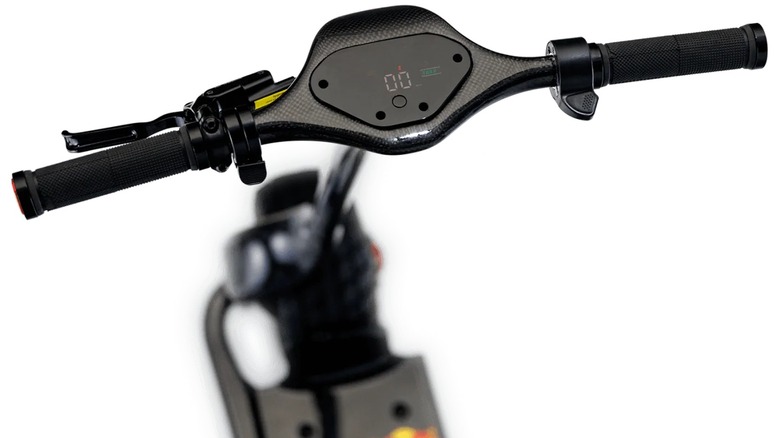
Formula 1 cars are the bread and butter of Oracle Red Bull Racing. The team's RB18 race car is an engineering masterpiece equipped with a 1.6-liter V6 that produces 900 horsepower and had a redline of a staggering 15,000 revolutions per minute. Historically, the team has been responsible for several other lightning-quick racecars that have brought them to victory several times since their first Formula 1, the RB1, back in 2005. It's no question the team knows how to make race cars.
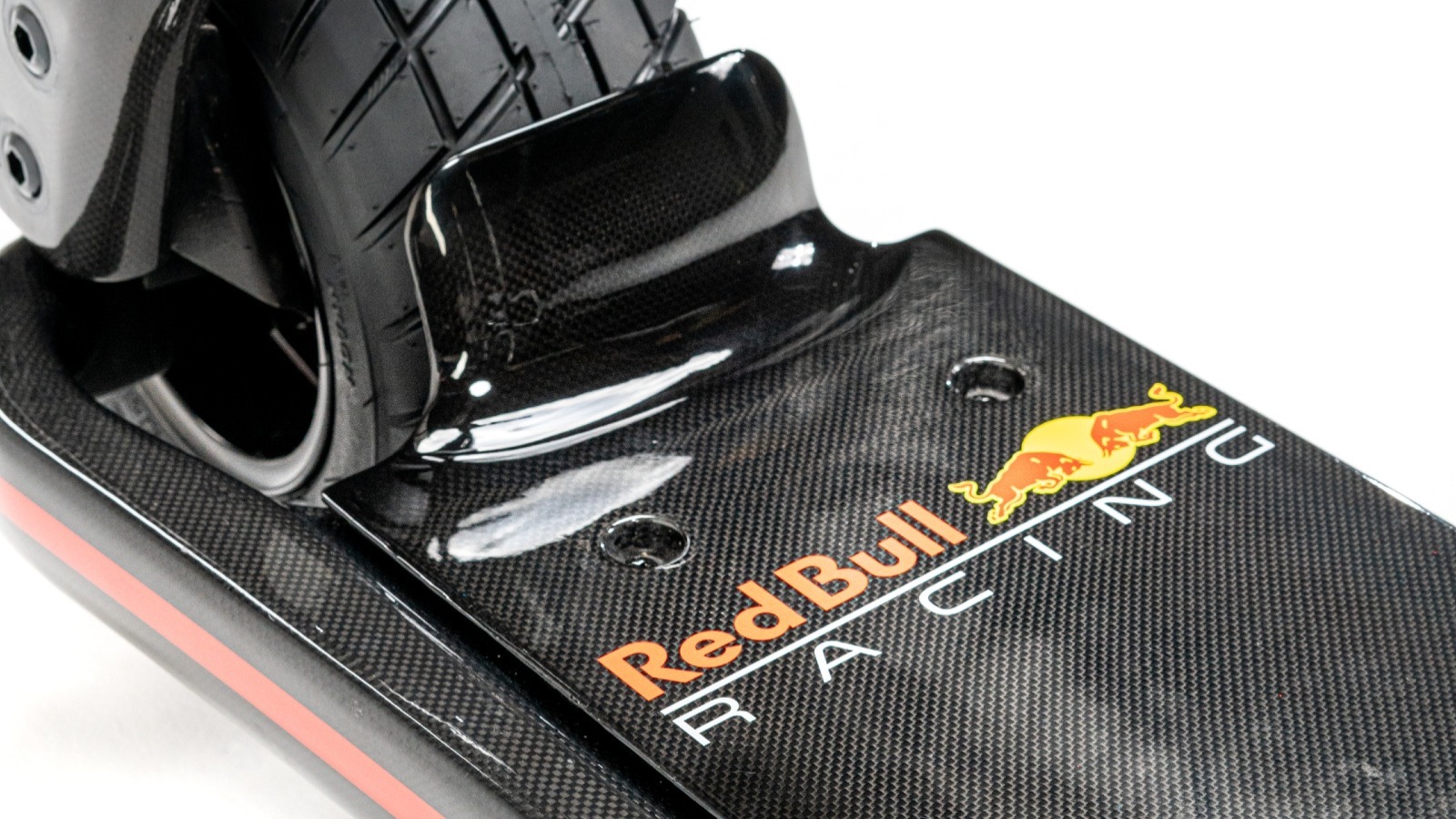
Last month, the brand announced its newest vehicular creation. This time it's not a high-revving fire-breathing monster of a race car ready to lay some rubber down at Monaco, but something a little humbler, more understated, and environmentally friendly than a Formula 1 car. Oracle Red Bull Racing unveiled its newest eScooter developed with eBike maker N+, the RBS#01. Its makers claim the new performance electric scooter is inspired by the team's F1 engineering prowess.
Inspired by Formula 1
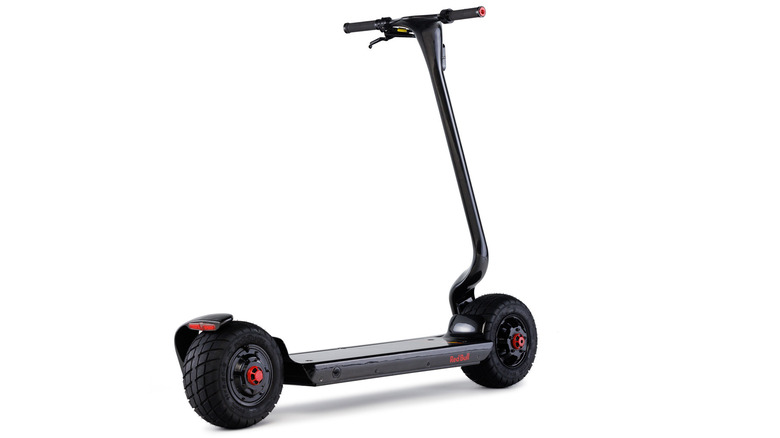
At $5,400, the new eScooter isn't cheap, but Red Bull backs that up with the RBS#01's specs. The scooter boasts a top speed of just over 27 miles per hour and a range of just 37 miles, making it a viable commuter for cities or otherwise bike-friendly routes. The team behind the scooter claims the model will take quite a lot of punishment before failing — up to 3G of load to be exact.
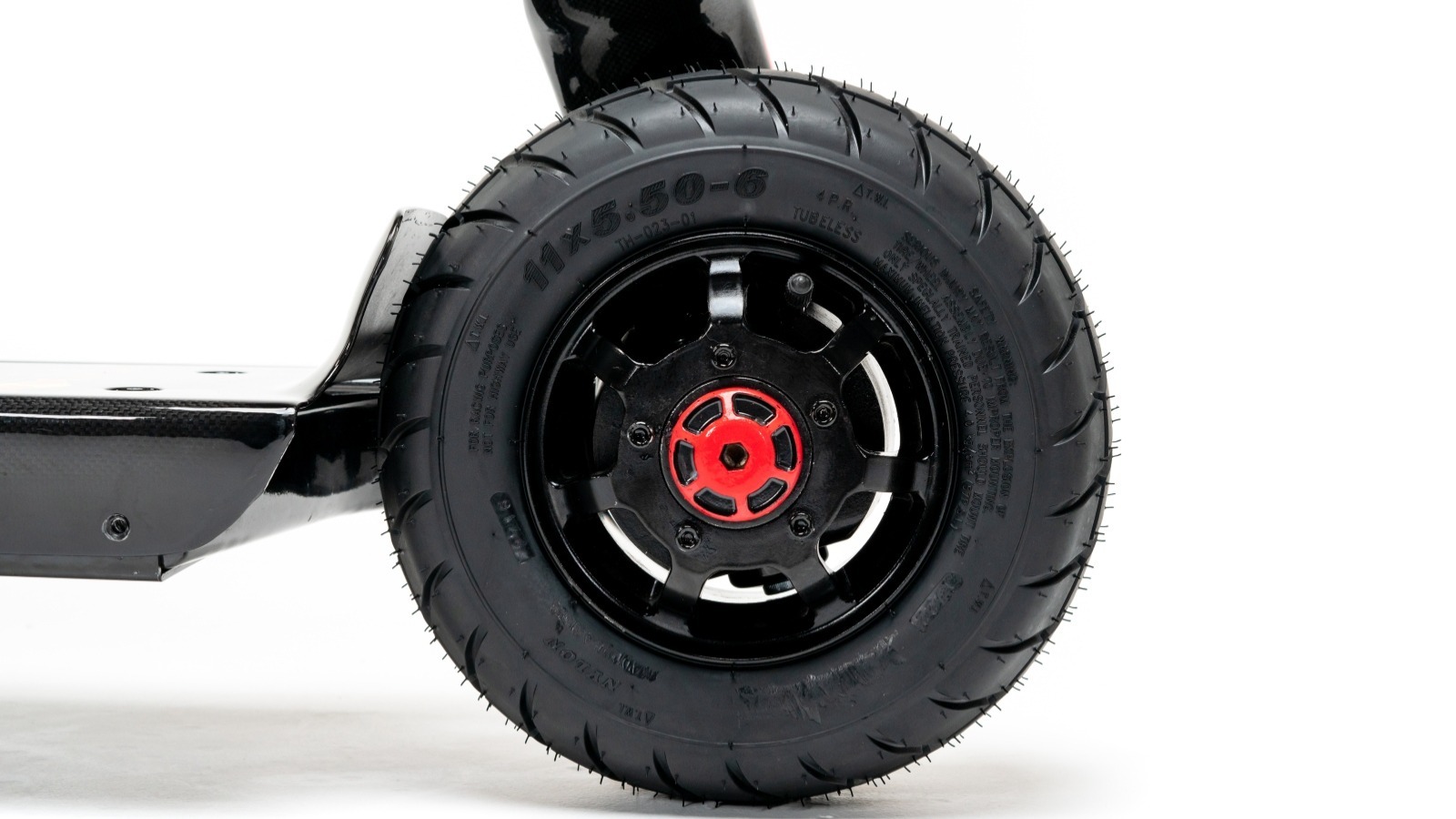
The scooter's hub motor produces 59 foot-pounds of torque and the whole thing only weighs a scant 50 pounds thanks to the utilization of carbon fiber on every conceivable surface and structure. The RBS further lives up to its performance heritage with drilled rotors and calibers that would be more at home on a race car than a commuter scooter. A wide riding deck and huge sticky tires make the scooter handle incredibly well, according to the manufacturer. Pre-orders opened at the Formula 1 Austin Grand Prix last month and deliveries are slated for early 2023, though the website lists shipments as starting in summer 2023.
The 10 Best Harley-Davidson Motorcycles Ever Made
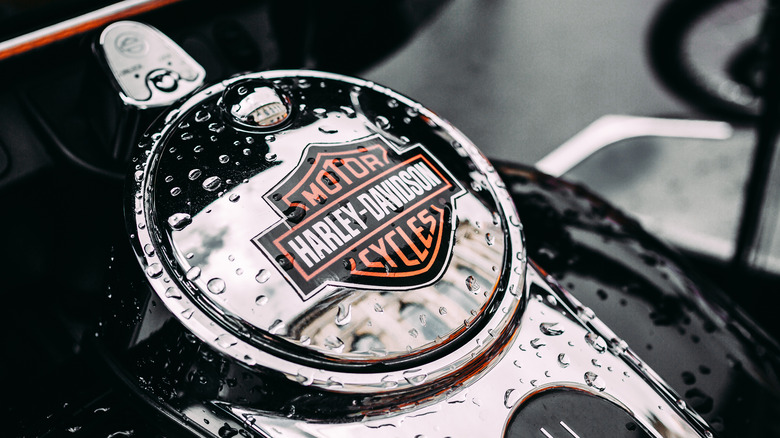
The Harley-Davidson motorcycle company has been manufacturing motorcycles in the U.S. since 1903, even surviving the Great Depression (via TIME). It has been a company with many owners over the years, and threats of bankruptcy just as numerous. But, through the years, H-D has not only made motorcycles, but also a lifestyle. Harley is no longer just a motorcycle company; it's a part of American society and a cultural icon.
With more than a century of building motorcycles, Harley will have plenty of models to talk about, some better than others. There was a time through the years spanning from 1969 to 1981 when the company was owned by AMF, which is most closely associated with bowling balls and equipment. This is also the period when most Harley owners will say the quality had gone so far downhill, it fell into a ravine. Although quality fell precipitously during the '70s, it finally rebounded, and the modern Harley-Davidson motorcycle is a reasonably well-built machine, and plenty of folks are willing to lay down exorbitant amounts of cash for a new one — the top-of-the-line model retails for more than $44,000. So, we dug deep into the archives of Harley-Davidson's motorcycles to come up with these 10 best bikes from the legendary Milwaukee company.
Harley-Davidson WLA Liberator
Talking about Harley's contribution to American society would be incomplete without mentioning its contribution to World War II. Contracted by the military to provide motorcycles to the U.S. Army, Harley provided the WLA "Liberator." The motorcycle Harley provided was tough and durable, if not particularly light at more than 500 pounds. It used an older flathead engine that was cheaper and easier to produce and had already proven to be reliable and tough. It would also make it easier to repair in the field as soldiers often have to fix their machines on the go. In the end, Harley sent nearly 100,000 motorcycles overseas (via Silodrome).
Without these durable machines, the Allies likely would have still won the war, but the contribution from Harley-Davidson made an impact. They were used mostly for escort, scout, and police duties and not for combat roles. Up to a third of the war production was sent to our Soviet allies, as well. After the war, however, Harley experienced difficulties getting raw materials as so much effort was put into rebuilding Europe's economies. This later led to cheap imported machines flooding the U.S. market and hampered Harley's efforts to expand after the war, according to the Motorcyclist.
After the war, tens of thousands of these motorcycles were left at home and abroad and former soldiers and civilians bought them up, altering them for civilian service. This makes original bikes with olive green paint and identifying military symbols exceedingly rare today.
Harley-Davidson V-Rod
The V-Rod may not have been the most popular Harley-Davidson motorcycle, but it is still an incredible bike, and it sold for an impressive 16 model years. The engine, dubbed Revolution by the company, debuted many firsts. Harley-Davidson has long prided itself on its reputation of history, creating bikes year after year with few radical changes to form or function. Small improvements came out every few years and tweaks in design differentiated model years. But the V-Rod brought out the first Harley with fuel injection, overhead cams, and water-cooling all at the same time (via MotorBiscuit). The Revolution name was apt.
Since the company had been perfecting an engine design dating to before WWII, Porsche Engineering was brought on board to aid in development. The resulting engine was thoroughly modern and delivered a respectable 120 horsepower. For the first time, a Harley rider could sit at traffic lights without a wave of heat rising from the engine. The styling was also more aggressive, taking on a more sporty look while retaining the classic American motorcycle lines.
Despite its fairly long tenure, it does not get much love from die-hard hog fans. It was meant to compete with Japanese bikes and draw in a different buyer. The Drive quotes a common refrain that there are plenty of motorcycle riders who proclaim they would never buy a Harley ... except for a V-Rod.
Harley-Davidson Pan America 1250
The Revolution engine contributed greatly to the evolution of Harley-Davidson as a brand and its attempts to attract new buyers, resulting in one of its current offerings: the Pan America 1250. It is a stunning departure from the glitzy chrome-emblazoned cruisers Harley is known for. The Pan America feels as comfortable off-road as on, but also benefits from the large, torque-heavy V-Twin engine. While dresser Harleys are built on tradition, this one is built on technology and performance.
This motorcycle utilizes the Revolution X engine with overhead cams and water cooling. It sits tall and has a large travel distance for the adjustable and adaptable suspension to help it tackle rugged terrain. It is kind of the anti-Harley, however, the company is working to diversify its offerings and wants to expand its customer base as part of its "More Roads to Harley-Davidson" product strategy, according to Rider Magazine. The Pan America also opts for a full digital display over gauges and offers a range of settings to riders. It is yet to be seen whether this will achieve the goals of the company, but if this kind of bike is what can be expected, Harley should be seeing a new breed of buyers to the brand in its next chapter.
Buell Motorcycle Company
To be fair, Buell motorcycles are not Harley-Davidson motorcycles, but they were inextricably linked for many years. Erik Buell was an engineer at Harley-Davidson and originally created a motorcycle just for racing. That eventually grew into a manufacturing business, of which Harley-Davidson bought a sizable interest in 1993, and then 98% ownership in 1998. Throughout its existence, Buell produced road-going motorcycles of a sports racer variety using Harley V-Twin air-cooled engines (via Motorcycle News). The bikes were sold as a companion brand to Harley, providing an option for customers looking for something other than the cruiser and touring bikes typical of H-D.
Buell bikes featured many innovations such as making the engine part of the frame, turning part of the frame into the fuel tank, and using a unique braking system with the disc connected to the outer rim of the wheel. While the bikes often sold better than Buell's expectations, they often did not fit in well within the Harley family. CEO Keith Wandell is said to have remarked about "Erik's racing hobby" and asked, "why anyone would even want to ride a sportbike," showing a clear lack of understanding of the motorcycle market as a whole (via Motorpedia). Despite producing some clever bikes and being the only American manufacturer of sportbikes, Harley closed up shop in 2009 and Buell motorcycles ceased to exist. However, Erik Buell is back with a new line of motorcycles coming in 2024.
[Featured image by Tanceymae via Wikimedia Commons | Cropped and scaled | CC BY-SA 4.0]
Harley-Davidson XR750
Harley-Davidson has been committed to racing from its origins. Some of the earliest racing was done on oval tracks of dirt and that continues to be a popular sport today called flat track racing. While the early days would have motorcycles coming straight from the factory and set to race, once the manufacturing and the racing matured, purpose-built machines would follow.
Harley made flat track machines for years, but it was the XR750 that became a legend. It was presented by Harley for racing in 1970, according to Silodrome. It was an immediate success and went on to dominate the sport for decades. In the period from 1972 to 2008, it won 29 of 37 AMA Grand National Championships. The bike's best-known publicity came from its use by daredevil superstar Evel Knievel in his death-defying stunts. It is a competition machine and not offered through dealers, nor is it listed on the company website, but it has been an important part of Harley's history. It stayed in production until being replaced by the water-cooled XG750R in 2015.
Harley-Davidson Fat Boy
Fat Boy joined the Harley-Davidson lineup in 1990 and has been a mainstay for the brand ever since. Characterized by its low riding position, wide front forks, and fat tires, it is a great cruiser bike for the rider who does not want the extra bulk and weight from a full touring model, but wants something more substantial than a Sporster.
The Fat Boy is part of the Softail family and uses a clever hidden rear suspension to give it the look of old bikes with a rigid frame. In addition to the thick shocks, early Fat Boys are distinguishable by their solid disc wheels, although the current lineup uses slotted wheels with a diminished disc in the center. According to Motorcycle News, the company in the '80s was languishing and struggling to find growth, relying on its heritage in designs and failing to refresh the styling. Willie G. Davidson, the grandson of one of the company founders, came up with this new look as a fresh take on the cruiser bike with a clean look that highlighted all the best of the classic Harley style. It worked and helped with a resurgence in cruisers in the '90s. It did so well that it has been in the lineup ever since.
Livewire One
Choosing the Livewire will surely ruffle some feathers. It has no chrome or tassels, but it does have the ability to propel Harley-Davidson as a company well into the future. No matter how much anyone may not like electrically propelled motor vehicles, they are here and the market share will be growing. It makes sense that Harley would step into this space and build an American version of the future.
Harley-Davidson first brought out the Harley-Davidson Livewire motorcycle in 2019, but has since spun off its electric division into a stand-alone entity simply called Livewire, which now offers two models. The original bike, now called Livewire One, is mostly unchanged from the first release, but no longer covered in traditional Harley-Davidson colors. When Harley first released an electric motorcycle, a huge criticism was its retail price of nearly $30,000. The new Livewire model, as MotorBiscuit explains, has addressed that with a price drop to a more manageable $22,799. It is full of tech, has a range of 146 miles, and can charge from zero to full in an hour on level 2 charging. And the 100 horsepower engine and instant torque of the electric motor will make it feel like it's taking off every time you ride it.
The bottom line is that this is the future. If the dedicated fans of the brand want it to survive, they should embrace this model, because it is the key to remaining relevant. That is why it is one of Harley's best bikes.
Harley-Davidson 11F
Harley-Davidson was founded in 1903, beginning by fitting what were essentially bicycle frames with engines and fuel tanks. Once the company saw that it could be successful in this endeavor, it expanded its capabilities and technology at a rapid pace in the following years. By 1915, several innovations had been developed and its 11F model was introduced, showcasing many new features for the first time.
With the 11F, Harley equipped the bike with a new V-Twin engine, a new three-speed transmission, and a magneto with an electrical lighting system (via How Stuff Works). The V-Twin engine was an improved engine with larger valves and it moved the intake valve to an overhead position while keeping the exhaust as a side valve. The bike also received an automatic oiler, meaning riders no longer had to stop to oil the valve train repeatedly on the road. Harley-Davidson was so sure of its new motorcycle that it advertised it as having 11 horsepower and backed that up in writing, something other motorcycle manufacturers were reluctant to do at the time.
Harley-Davidson Sportster
The Sportster motorcycle series has been a mainstay in the Harley-Davidson lineup since 1957, changing often in technology, but not style. From the start, the Sportster was the midsize offering from Harley with its OHV 883cc engine, upgraded from the 750cc flathead K model it replaced. It was a response to the lightweight British bikes being imported at the time from Triumph, BSA, and Norton (via Ultimate Motorcycling). While some of the competition has long since closed, the Sporster remains the entry-level Harley, with the Sportster S being one of its latest models.
From the '50s to the '70s, Harley-Davidson tried to attract buyers of small motorcycles by importing and rebadging light European motorcycles with only moderate success. However, by 1979, that practice ended and the Sportster became the smallest of the Harley lineup until the Street 500 joined the lineup from 2014 to 2020. Sportsters are a perfect mix of being a motorcycle with lots of torque and good size while remaining easily managed in any traffic. They're also great for those who like to ride, but have no need for open-road touring.
Recommend
About Joyk
Aggregate valuable and interesting links.
Joyk means Joy of geeK